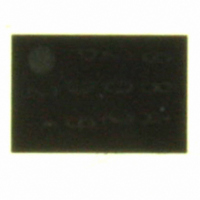SE98ATP,547 NXP Semiconductors, SE98ATP,547 Datasheet - Page 9

SE98ATP,547
Manufacturer Part Number
SE98ATP,547
Description
IC TEMP SENSOR DDR 8-HWSON
Manufacturer
NXP Semiconductors
Datasheet
1.SE98ATP547.pdf
(43 pages)
Specifications of SE98ATP,547
Function
Temp Monitoring System (Sensor)
Topology
ADC (Sigma Delta), Register Bank
Sensor Type
Internal
Sensing Temperature
-40°C ~ 125°C
Output Type
I²C™/SMBus™
Output Alarm
Yes
Output Fan
Yes
Voltage - Supply
1.7 V ~ 3.6 V
Operating Temperature
-40°C ~ 125°C
Mounting Type
Surface Mount
Package / Case
8-WSON (Exposed Pad), 8-HWSON
Temperature Threshold
Programmable
Full Temp Accuracy
+/- 1 C
Digital Output - Bus Interface
2-Wire, SMBus, I2C
Digital Output - Number Of Bits
11
Supply Voltage (max)
3.6 V
Supply Voltage (min)
1.7 V
Description/function
DDR Memory Module Temperature Sensor
Maximum Operating Temperature
+ 125 C
Minimum Operating Temperature
- 40 C
Supply Current
250 uA
Lead Free Status / RoHS Status
Lead free / RoHS Compliant
Other names
568-4731-2
SE98ATP,147
SE98ATP,147
NXP Semiconductors
SE98A_4
Product data sheet
7.3.2.2 Critical trip
7.3.3.1 Comparator mode
7.3.3.2 Interrupt mode
7.3.3 Event operation modes
The T
modified by hysteresis as programmed in the Configuration register. When the
temperature reaches the critical temperature value in this register (and EVENT is
enabled), the EVENT output asserts and cannot be de-asserted until the temperature
drops below the critical temperature threshold. The EVENT cannot be cleared through the
Clear EVENT bit (CEVNT) or SMBus ALERT.
The Critical Alarm Trip should always be set above the Upper Boundary Alarm Trip.
In comparator mode, the EVENT output behaves like a window-comparator output that
asserts when the temperature is outside the window (e.g., above the value programmed in
the Upper Boundary Alarm Trip register or below the value programmed in the Lower
Boundary Alarm Trip register or above the Critical Alarm Trip resister if T
selected). Reads/writes on the registers do not affect the EVENT output in comparator
mode. The EVENT signal remains asserted until the temperature goes inside the alarm
window or the window thresholds are reprogrammed so that the current temperature is
within the alarm window.
The comparator mode is useful for thermostat-type applications, such as turning on a
cooling fan or triggering a system shutdown when the temperature exceeds a safe
operating range.
In interrupt mode, EVENT asserts whenever the temperature crosses an alarm window
threshold. After such an event occurs, writing a 1 to the Clear EVENT bit in the
configuration register de-asserts the EVENT output until the next trigger condition occurs.
•
Advisory notification:
– NXP device: Requires one conversion cycle (125 ms) after setting the Alarm
– Competitor devices: Compares the Alarm Window with temperature register at any
– Work-around: Wait at least 125 ms before enabling EVENT output (EOCTL = 1).
– SE98B will compare Alarm Window and temperature register immediately after
th(crit)
Window before comparing the alarm limit with temperature register to ensure that
there is correct data in the temperature register before comparing with the Alarm
Window and operating EVENT output.
time, so they get the EVENT output immediately when new T
EVENT output are set at the same time.
Intel will change Nehalem BIOS so that T
EVENT output is enabled and Event value is checked.
1. Set T
2. Doing something else (make sure that exceeds 125 ms).
3. Enable the EVENT output (EOCTL = 1).
4. Wait 20 μs.
5. Read Event value.
setting.
temperature setting is programmed in the Critical Alarm Trip register (04h) as
th(crit)
.
Rev. 04 — 25 November 2009
DDR memory module temp sensor, 1.7 V to 3.6 V
th(crit)
is set for more than 125 ms before
th(crit)
© NXP B.V. 2009. All rights reserved.
th(crit)
and
SE98A
only is
9 of 43















